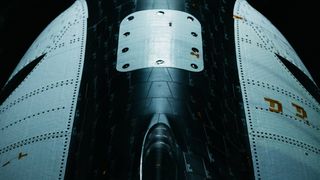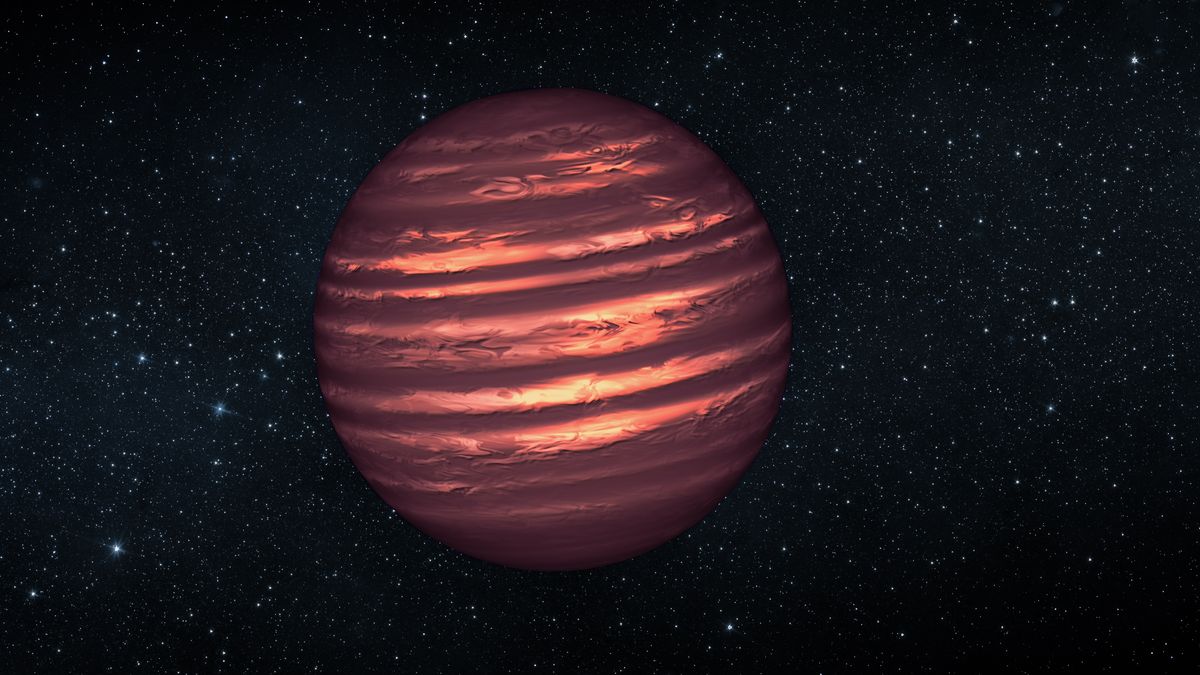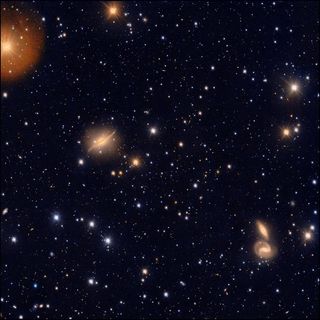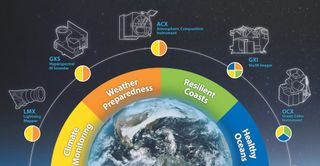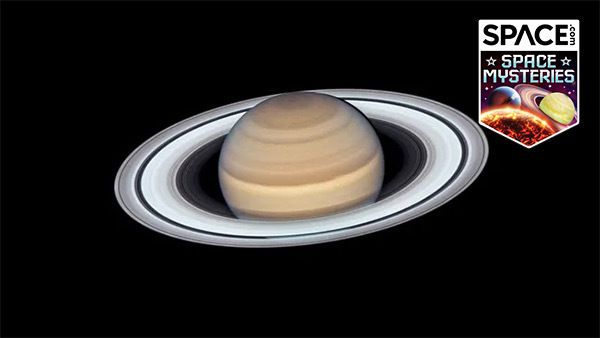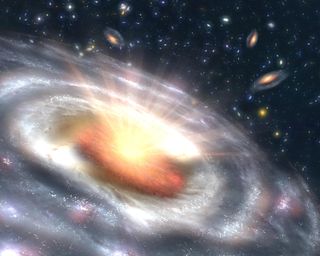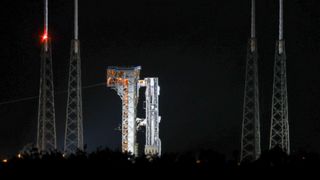The private Dream Chaser space plane is closer to reaching the final frontier than ever before, with a completed checklist from its environmental testing phase and preparations underway to send it to Florida for final testing ahead of launch. Three months ago, Space.Com gave you up-close looks at Sierra Space’s inaugural Dream Chaser space plane at NASA’s Neil Armstrong Test Facility in Ohio. Since then, the robotic space plane, named “Tenacity,” and its Shooting Star cargo module have successfully completed a series of assessments to prepare them for space’s…
Read MoreCategory: The Moon
Our moon
NASA’s Nancy Grace Roman Telescope will hunt for tiny black holes left over from the Big Bang
Black hole week is in full swing, and to celebrate, NASA has explained how its next major astronomical instrument, the Nancy Grace Roman Space Telescope, will hunt for tiny black holes that date back to the Big Bang. When we think of black holes, we tend to picture vast cosmic monsters like stellar-mass black holes with masses tens to hundreds of times that of the sun. We may even picture supermassive black holes with masses millions (or even billions) of times that of the sun sitting at the hearts of…
Read MoreBoeing’s Starliner rolled off launch pad to replace ‘buzzing’ rocket valve (photo)
Boeing’s Starliner capsule has left the launch pad. Starliner and its rocket ride, a United Launch Alliance (ULA) Atlas V, rolled off the pad at Florida’s Cape Canaveral Space Force Station today (May 8), heading to an assembly building at the site so scientists can replace a misbehaving valve in the launcher’s upper stage. The duo could be back soon, however: They’re scheduled to launch no earlier than May 17, kicking off Starliner’s first-ever astronaut mission, a trial run to the International Space Station (ISS) called Crew Flight Test (CFT).…
Read MoreA failed star and an ammonia trail could reveal how some giant exoplanets form
Astronomers now have a way to figure out how gas-giant planets form, thanks to a discovery by the James Webb Space Telescope (JWST) of ammonia “isotopologues,” which are molecules that contain the same elements but with differing numbers of neutrons. The nucleus of an atom is made from a bunch of protons and neutrons, and while the number of protons within an element does not change — for example, carbon atoms always contain six protons and nitrogen atoms always have seven protons — the number of neutrons can vary. When…
Read MoreWorld’s largest visible light telescope spies a galaxy cluster warping spacetime
When astronomers look at galaxies, they’re often conducting a sort of archaeology. Well, cosmic archeology. Basically, by examining what a galaxy looks like and how it interacts with its nearest galactic neighbors, it’s possible to reconstruct that galaxy’s history. And one tool that astronomers can use for such work is the VLT Survey Telescope (VST), the world’s largest visible-light telescope. Now, the VST has released a triptych of images depicting some of those distant galaxies necessary in uncovering galactic pasts. One image depicts ESO 510-G13, a galaxy 150 million light-years…
Read MoreNext-gen satellites will paint a clearer picture of a changing Earth
Thanks to next-generation satellite systems scientists have in place, like the National Oceanic and Atmospheric Administration’s GOES-R series, scientists are able to get high-definition images of Earth faster than ever before. This is data that helps paint a full picture of our planet; the satellites can be thought of as in collaboration with one another, using special tools to make measurements and take observations that would otherwise be nearly impossible to perform from the ground directly. Yet, as our climate continues to change at a rapid rate due to human…
Read MoreCould alien life be hiding in the rings of Saturn or Jupiter?
The search for life beyond Earth has driven seekers to scout all sorts of potential habitats — not just on the growing list of known Earth-like exoplanets, but in other places within our own solar system. The first choice that comes to mind is likely Mars, which some scientists believe still holds oases of liquid water beneath its barren surface, Not long ago, the detection of phosphine, a possible indicator of biological decay, in the atmosphere of Venus set off debate about whether life could exist in that hellishly hot…
Read MoreJames Webb Space Telescope suggests supermassive black holes grew from heavy cosmic ‘seeds’
The James Webb Space Telescope (JWST) has observed light from stars surrounding some of the earlier supermassive black holes in the universe — black holes seen as they were less than a billion years after the Big Bang. The observations conducted by a team from the Massachusetts Institute of Technology (MIT) addresses the question of how these cosmic titans that sit at the hearts of galaxies grew to tremendous masses, equivalent to millions (sometimes even billions) of suns. More specifically, how did they grow so rapidly? The findings could also…
Read MoreBoeing Starliner’s historic 1st astronaut launch delayed by Atlas V rocket issue
CAPE CANAVERAL — Starliner will wait at least four more days for its first crewed launch. Boeing’s new commercial spacecraft, Starliner, waved off its first launch attempt late tonight (May 6) due to a problem with an “oxygen relief valve on the Centaur Stage on the Atlas V,” NASA posted on X. Atlas V, the flight’s rocket manufactured by United Launch Alliance, has flown missions since 2002 with a 100 percent success rate, but this is its first mission with astronauts. “The engineering team has evaluated the vehicle is not…
Read More‘Sparkly’ narwhal toy trades sea for space as Boeing Starliner zero-g indicator
What has one horn, two crewmates and shares a name with its ride into orbit? “Calypso,” the plush sequined narwhal that is flying with NASA astronauts Barry “Butch” Wilmore and Sunita “Suni” Williams on the crew flight test (CFT) of “Calypso,” Boeing’s CST-100 Starliner commercial spacecraft. A toy version of the deepest-diving marine mammal, it is soon to be the highest-flying example of its kind while serving as the crew’s “zero-g indicator.” “My zero-g indicator happens to be a very sparkly narwhal whose name is ‘Calypso,’” said Williams in a…
Read More